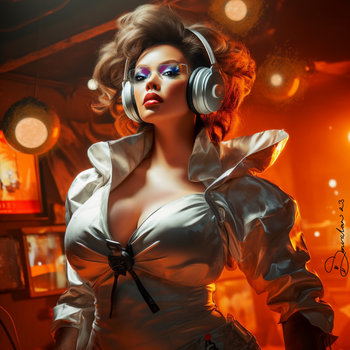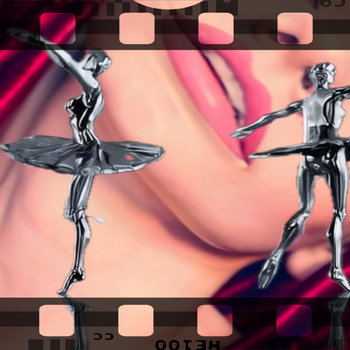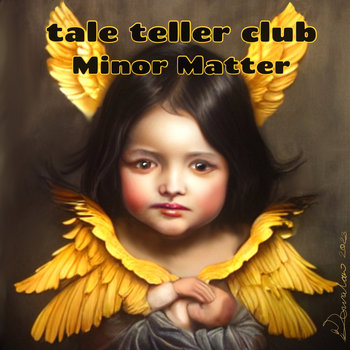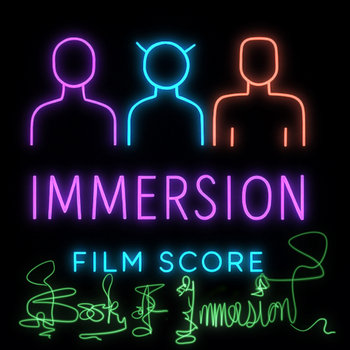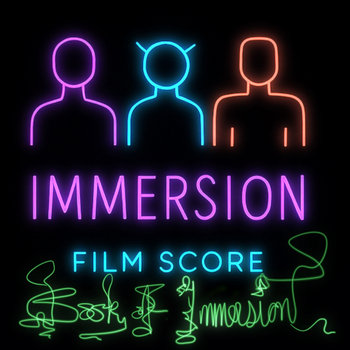✨ Acrylic Blocks by Tale Teller Club Merch – Tiny Works of Art for Your Desk & Home
Looking for something a little different to brighten up your space? The Tale Teller Club Acrylic Blocks are here to turn everyday corners into mini galleries. These chunky, crystal-clear blocks aren’t just décor – they’re little pieces of art history in the making, featuring designs straight from the creative vaults of Sarnia de la Maré and the Tale Teller Club universe.
🌟 What Are Acrylic Blocks?
Acrylic blocks are solid, free-standing, glass-like pieces that showcase your chosen artwork in vivid colour and stunning detail. They’re thick enough to stand on their own, which means no frames, no nails, no fuss – just instant style.
Each block features one of our signature designs, whether that’s:
-
🎶 Immersion Static glitch art for your sci-fi soul
-
🐭 Rat Gang Crew characters for a playful pop of colour
-
💕 Mills and Swoon romantic motifs for hopelessly stylish romantics
-
🖤 Blink Friction edgy upcycled fashion graphics for your inner rebel
They’re like pocket-sized windows into the Tale Teller world.
🏠 How to Display Them
One of the joys of acrylic blocks is how versatile they are:
-
Desk companions: Pop one next to your laptop for inspiration during long workdays.
-
Bookshelf buddies: Stand them between novels for a literary/artistic mash-up.
-
Mantel moments: Cluster a few together to create a striking mini-gallery.
-
Window magic: Place near natural light – the acrylic catches and refracts it beautifully.
They’re small enough to fit in tight spaces but bold enough to get noticed.
🎁 Gift Ideas
Need a gift that feels thoughtful but won’t break the bank? Acrylic blocks tick every box:
-
For art lovers: A collectible piece they can display anywhere.
-
For bookworms: Pair with a Tale Teller Club book or Kindle edition.
-
For music fans: Match the design to their favourite Immersion Static single.
-
For kids or teens: Choose a Rat Gang Crew or Tale Teller Kids design for their room.
-
For yourself: Yes, self-gifting is a thing – especially when it’s this cute.
They also make excellent stocking fillers, desk-warming presents, and ‘just because’ surprises for friends who appreciate unique, story-driven art.
🖤 Why We Love Them
At Tale Teller Club, we believe art should be fun, accessible, and part of your everyday life – not just something locked away in galleries. Acrylic blocks are perfect little art ambassadors: durable, collectible, and endlessly giftable.
💡 Tip: Start with one block, then build your own mini-gallery over time. The more you collect, the more your display becomes a reflection of your Tale Teller journey.

Ableteen Robot Servant Book of Immersion Strata 1 Acrylic Block
£17.26
£22.99 (25% off)

Book of Immersion – “Butterfly Effect” Illustration Strata 1 Acrylic Block
£17.26
£22.99 (25% off)

Mercury POS Book of Immersion Strata 1 Collectors Issue Acrylic Block
£17.26
£22.99 (25% off)

Book of Immersion Strata 1 Cover Art Acrylic Block
£17.26
£22.99 (25% off)

Book of Immersion Orange Patch Logo Art Acrylic Block
£17.26
£22.99 (25% off)

Cyborg Bloom – Futuristic Floral Robot Portrait Ship of Sirens Art by iServalan Acrylic Block
£17.26
£22.99 (25% off)

Mr Capricious Music Video Still Art by Tale Teller Club Acrylic Block
£17.26
£22.99 (25% off)

Renyke Dreams of Flex Book Of Immersion Illustration Acrylic Block
£17.26
£22.99 (25% off)

Pucker Up Trump and Putin Politica UK Acrylic Block
£17.26
£22.99 (25% off)

Thread Bear Autism Baby Rat by Tale Teller Kids Acrylic Block
£17.26
£22.99 (25% off)

Neon sci-fi vibes from The Book of Immersion Acrylic Block
£17.26
£22.99 (25% off)

Baby Army by Toddle Poddle 6 Times Table Maths Fun Acrylic Block
£17.26
£22.99 (25% off)

Cheeky Baby Crew Toddle Poddle Army Tale Teller Kids Acrylic Block
£17.26
£22.99 (25% off)

Cyan and Pink Lady with Monocle Neon Collection Tale Teller Club Merch Acrylic Block
£17.26
£22.99 (25% off)

Beats Ministry Tale Teller Club Orchestra Neon Logo Acrylic Block
£17.26
£22.99 (25% off)

After Titian’s by Sarnia, scribble painting mandala portrait Acrylic Block
£17.26
£22.99 (25% off)

Blue Jesus by Scribble Artist illustrator Sarnia de la Mare Acrylic Block
£17.26
£22.99 (25% off)

Inclusion and Positivity Tale Teller Kids Acrylic Block
£17.26
£22.99 (25% off)

Sunflower Shining on a Sunny Day by Sarnia de la Mare Acrylic Block
£17.26
£22.99 (25% off)

Rat Gang Crew Neon Lights by iServalan for Tale Teller Club Acrylic Block
£17.26
£22.99 (25% off)

Different is Brilliant Neurodivergence Art by Sarnia for Tale Teller Kids Acrylic Block
£17.26
£22.99 (25% off)

The Book of Immersion Tale Teller Club in Neon Lights Acrylic Block
£17.26
£22.99 (25% off)

Tale Teller Kids Neurodivergence Logo Rainbow Bird In Headphones Acrylic Block
£17.26
£22.99 (25% off)

The Bird Garden Acrylic Block
£17.26
£22.99 (25% off)

The She J by iServalan for Tale Teller Club Acrylic Block
£17.26
£22.99 (25% off)

Pink Skull and Crow with Butterfly Eye by iServalan for Tale Teller Club Acrylic Block
£17.26
£22.99 (25% off)

Sirens from The Immersion Book by Tale Teller Club pixel Paintings Acrylic Block
£17.26
£22.99 (25% off)

Rat Boy Racer Gang Crew by iServalan for Tale Teller Club Acrylic Block
£17.26
£22.99 (25% off)

Rat Gang Crew Books Graf Artist in His Castle by iServalan in Greyscale Acrylic Block
£17.26
£22.99 (25% off)

Rat Girl Racer from Rat Gang Crew and the Broken City by iServalan Acrylic Block
£17.26
£22.99 (25% off)

Rat Punk from Rat Gang Crew and the Broken City Tale Teller Club Books Acrylic Block
£17.26
£22.99 (25% off)

Amalie and the Yellow Monsters Rat Gang Crew and the Overgrounders Acrylic Block
£17.26
£22.99 (25% off)

Rat Gang Crew Biker Scout by iServalan for Tale Teller Kids Book Acrylic Block
£17.26
£22.99 (25% off)

There’s a Mouse in the House Rat Gang Crew Illustration by iServalan Acrylic Block
£17.26
£22.99 (25% off)

The Countess of Brighton and Hackney is Gifted Modern Art Acrylic Block
£17.26
£22.99 (25% off)

Ratty and Mouse from Rat Gang Crew by iServalan Acrylic Block
£17.26
£22.99 (25% off)

Rat Boy Racer Chase from Rat Gang Crew Books Acrylic Block
£17.26
£22.99 (25% off)

Rat Gang Crew Logo by Tale Teller Kids Books Acrylic Block
£17.26
£22.99 (25% off)

Scribble Painting no 7 by iServalan Exclusive to Tale Teller Club Records Acrylic Block
£17.26
£22.99 (25% off)

Scribble Painting no 6 by iServalan Exclusive to Tale Teller Club Records Acrylic Block
£17.26
£22.99 (25% off)

Copy of Scribble Painting no 4 by iServalan Exclusive to Tale Teller Club Records Acrylic Block
£17.26
£22.99 (25% off)

Scribble Painting no 3 by iServalan Exclusive to Tale Teller Club Records Acrylic Block
£17.26
£22.99 (25% off)

Scribble Painting no 2 by iServalan Exclusive to Tale Teller Club Records Acrylic Block
£17.26
£22.99 (25% off)

Scribble Painting no 1 by iServalan Exclusive to Tale Teller Club Records Acrylic Block
£17.26
£22.99 (25% off)

Scribble Painting no5 by iServalan Exclusive to Tale Teller Club Records Acrylic Block
£17.26
£22.99 (25% off)

Rat Gang Crew Logo Design by iServalan White on Black Acrylic Block
£17.26
£22.99 (25% off)

Rat Gang Crew Logo Design by iServalan Black on White Acrylic Block
£17.26
£22.99 (25% off)

Kiss Kiss Lady Love Monochrome Logo Heart Retro 1960s Acrylic Block
£17.26
£22.99 (25% off)

Mr Fox Watercolour Illustration by Pasha Wildlife Painter Acrylic Block
£17.26
£22.99 (25% off)

Pink Flamingo at Midnight with Twinkly Stars by Goddamn Media Acrylic Block
£17.26
£22.99 (25% off)

Leather Corset In White Fashion Illustration by Goddamn Media Acrylic Block
£17.26
£22.99 (25% off)

Leather Corset Fashion Illustration by Goddamn Media Acrylic Block
£17.26
£22.99 (25% off)

Fred Wears Puffballs and blows Bubbles Walking His Stag by iServalan Book s Acrylic Block
£17.26
£22.99 (25% off)

Happy Hippo with Crane Fly Watercolour by Tale Teller Club Books Acrylic Block
£17.26
£22.99 (25% off)

Me and Cat Sleeping in Winter Monochrome Art by iServalan for Tale Teller Club Acrylic Block
£17.26
£22.99 (25% off)

She Came Darkly With Grave Intent by iServalan Acrylic Block
£17.26
£22.99 (25% off)

Little Miss Muffet Monochrome Baby Spider by iServalan Alternative Acrylic Block
£17.26
£22.99 (25% off)

You Are My Flower Erotica Sensual Series by Goddamn Media Acrylic Block
£17.26
£22.99 (25% off)

Monochrome Pin Up Girl by iServalan for Tale Teller Club Music Acrylic Block
£17.26
£22.99 (25% off)

She Was a Soldier by iServalan Monochrome Book Art Tale Teller Club Publishing Acrylic Block
£17.26
£22.99 (25% off)

Cat on my Head Monochrome by iServalan for Tale Teller Club Music Acrylic Block
£17.26
£22.99 (25% off)

Cats in Black and Gold Leaf Art Pet Acrylic Block
£17.26
£22.99 (25% off)

The Cat’s Behind Black and Gold Leaf Art by iServalan for Tale Teller Club Music Acrylic Block
£17.26
£22.99 (25% off)

Clever Mr Owl Kids’ Book Illustration for Tale Teller Club Publishing Acrylic Block
£17.26
£22.99 (25% off)

Moo Cow Happy Bull Watercolour Cute Bright Kids’ Toddle Poddle Illustration Acrylic Block
£17.26
£22.99 (25% off)

Rat Gang Girl Crew Poster Art for Tale Teller Club Books Acrylic Block
£17.26
£22.99 (25% off)

The Rat Killer Book Illustration for Tale Teller Club Books Acrylic Block
£17.26
£22.99 (25% off)

Watercolour painting Cat n Collar by iServalan Acrylic Block
£17.26
£22.99 (25% off)

Rat Gang Boy Racer Rebel by iServalan Acrylic Block
£17.26
£22.99 (25% off)

Rat Gang Girl Crew with Cat and Ice Cream by iServalan Acrylic Block
£17.26
£22.99 (25% off)

Skull Ballet Shoes Goddamn Media Post Card Design 20011 Acrylic Block
£17.26
£22.99 (25% off)

Rebel Biker Boy Rat Gang Rebels Book Illustration by Sarnia Acrylic Block
£17.26
£22.99 (25% off)

Scout from the Rat Gang Crew Book By Sarnia Acrylic Block
£17.26
£22.99 (25% off)

Cat Contemporary Art Pet Portrait Tabby Book Illustration iServalan Painting Acrylic Block
£17.26
£22.99 (25% off)

Study in Pencil and. Charcoal on Paper by Sarnia Acrylic Block
£17.26
£22.99 (25% off)

Arduino by iServalan Homotech 23 Illustration Art by Tale Teller Club Acrylic Block
£17.26
£22.99 (25% off)

Black Hearts by iServalan Homotech 23 Illustration Art by Tale Teller Club Orchestrations Acrylic Block
£17.26
£22.99 (25% off)

Art Nouveau Forest by iServalan Homotech 23 Illustration Art by Tale Teller Club Orchestrations Acrylic Block
£17.26
£22.99 (25% off)

Easter Bonnets by iServalan Homotech 23 Illustration Art by Tale Teller Club Orchestrations Acrylic Block
£17.26
£22.99 (25% off)

Beasts by iServalan Homotech 23 Illustration Art by Tale Teller Club Orchestrations Acrylic Block
£17.26
£22.99 (25% off)

Lovely Bubble Bugs by iServalan Homotech 23 Illustration Art by Tale Teller Club Orchestrations Acrylic Block
£17.26
£22.99 (25% off)

My Personal Cloud by iServalan Homotech 23 Illustration Art by Tale Teller Club Orchestrations Acrylic Block
£17.26
£22.99 (25% off)

Bad Weather by iServalan Homotech 23 Illustration Art by Tale Teller Club Orchestrations Acrylic Block
£17.26
£22.99 (25% off)

Wonderful Morning for Beasts by iServalan Homotech 23 Illustration Art by Tale Teller Club Orchestrations Acrylic Block
£17.26
£22.99 (25% off)

Tiger Feet by iServalan Homotech 23 Illustration Art by Tale Teller Club Orchestrations Acrylic Block
£17.26
